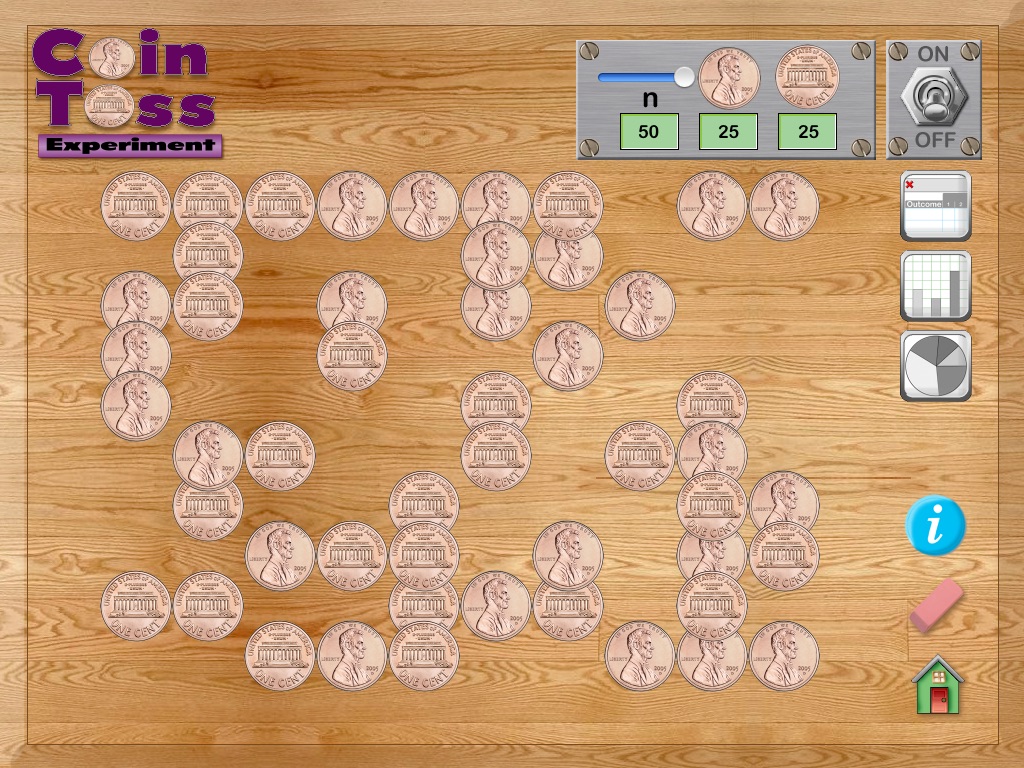
Probability Toolkit
The Probability Toolkit provides teachers and students with a collection of virtual mathematical devices to simulate probability experiments. The experiments use popular math manipulatives to help students better understand probability theory and statistics. It is perfect for elementary and middle school classrooms. Enrich your mathematics curriculum with the Probability Toolkit.
Probability Devices:
• Coin Toss Experiment
• Gumball Machine Experiment
• Dice Roll Experiment
• Random Numbers Experiment
• Spinners Experiment
• Binomial Machine Experiment
Learning about probability can be fun for students. Probability plays a role in many of the games that students enjoy playing. Probability Toolkit goes beyond simple game playing and presents students with an interactive tool that encourages the developing of an understanding of probability theory and statistics. By controlling and observing simulated experiments involving different devices, students learn increasing the number of events and also summing events across trials improves the likelihood that an experimental probability will be close to a theoretical probability for a specific experiment.
Math educators have recognized the importance of emphasizing learning activities dealing with data and chance. This emphasis represents a departure from a mathematics curriculum that only emphasizes memorization of facts. Today the role of data and chance in school mathematics in changing in terms of it importance and also the extent to which these concepts relate to other subject areas. People have a natural approach to understanding the role of data and chance in terms of their everyday lives. This informal understanding becomes the basis for specific explorations which are designed to enhnace the mathematical ability of students to formally analyze situations involving probabilities. The approach taken in the design of this app involves the implementation of instructional strategies which focus on important themes:
Data Collection - Students conduct experiments and make observations, then record the results in a tabular form.
Communication - Through small group instructional approaches students learn to discuss mathematical concepts related to probability. Graphs, for example, are one way in which students learn how to describe mathematical events.
Problem Solving - The role that an understanding of probability plays in enhancing problem solving skills cannot be emphasized enough. Several investigations involve problem solving where probability theory is used to evaluate the reasonableness of an answer.



